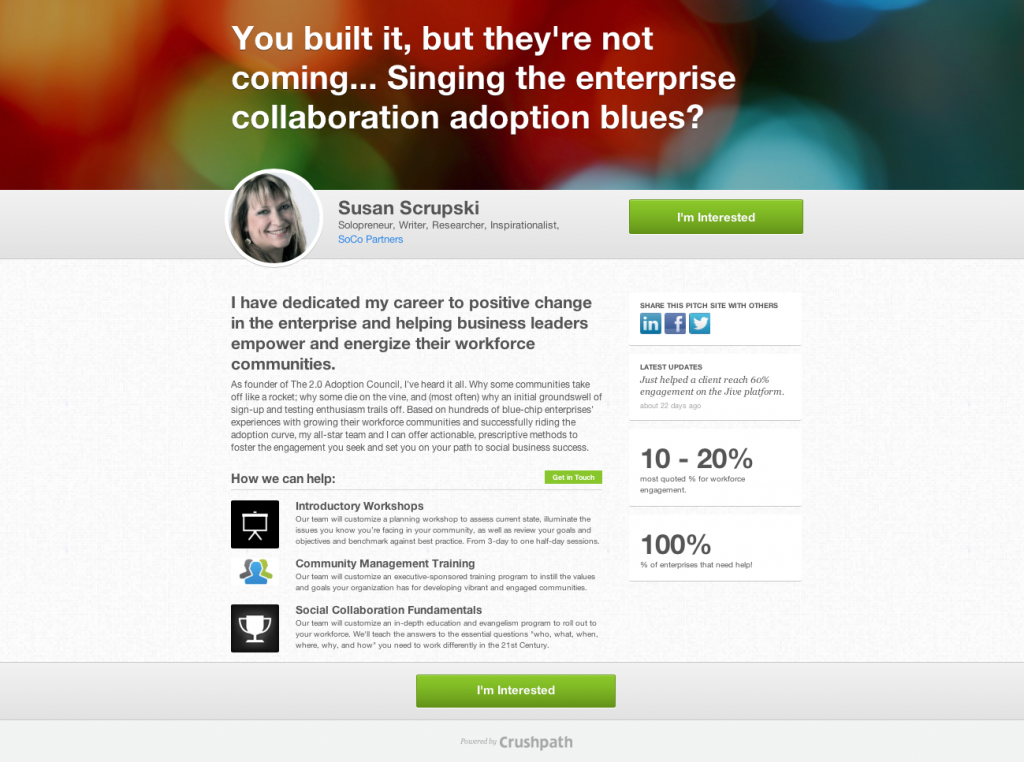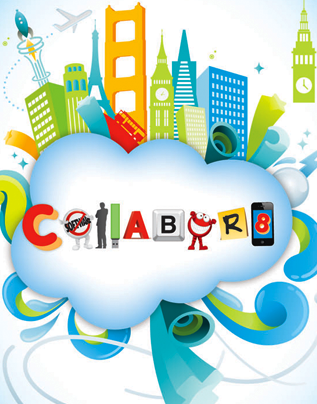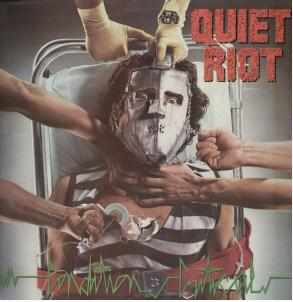I caught up with Sam Lawrence just before SXSW to hear about his latest milestone with the company he founded in 2011, Crushpath. Readers of this blog will remember Sam as the first highly visible CMO for Jive Software. Sam’s Go Big Always blog defined the category for social software back in ’09. Sam’s contribution was always edgy, always provocative, and always right. There were few in our space that had the voice, influence, and insight Sam had early on. I’ve missed him over the years, and am really happy to see him back with this amazing new offering. I told Sam on the phone I simply could not be objective about this product because I frigg’n love it. Even though I was a Sam fan already, I’m an even bigger Crushpath fan.
What is Crushpath? As usual, Sam says it best:
Crushpath gives people a way to pitch their product, service, idea, or event with a simple, one page website that grabs the attention and captures leads in a way that email can’t. Your pitch is searchable, shareable, and social, so you get tons of eyeballs on it and are notified every time someone is interested. Then, keep track of your business relationships with a chronological play by play of all activity as it’s happening.
Sam gave me a trial account to experiment with, so I’ve begun building a few pitch sites to see how it works. The elegance of the user interface and drop-dead-simple design is what does it for me. Until I spoke to Sam, I didn’t realize Matt Wilkinson was a co-founder. Matt led product development for another product I absolutely love: Socialcast. So, that the product is simple to use, looks great, and has a lag time of about 15 minutes to usefulness does not surprise me, considering Matt’s track record with building great software.
But, really, what makes Crushpath brilliant is what it does. It’s built on the philosophy that “everyone pitches.” And this is where the company taps into a wellspring of need that has previously gone unanswered in the market. The plethora of junky email marketing, CRM systems, cold-calls – younameit – that clutters up today’s marketing outreach is sorely in need of a dramatic improvement. Crushpath cuts to the chase. It sums up what you’re selling and let’s you do that in a straight-forward, no nonsense way. In the company’s latest announcement, Crushpath reduced its pricing to $9/mo. for a limited time. At that price, it’s the best investment you can make on the social web to get your story out and connect directly to your market. Definitely check it out. I’m sure you’ll love it as much as I do.





